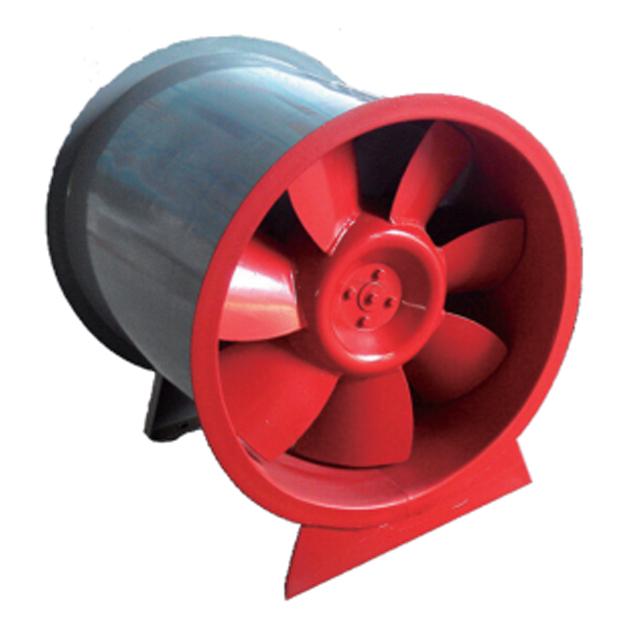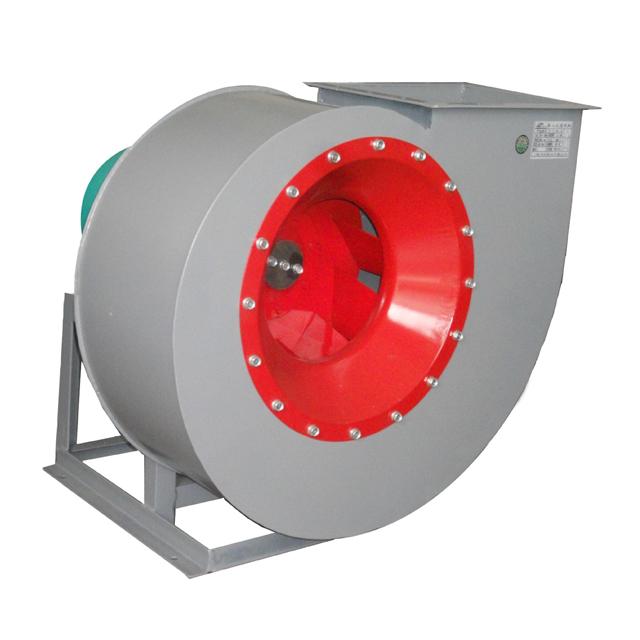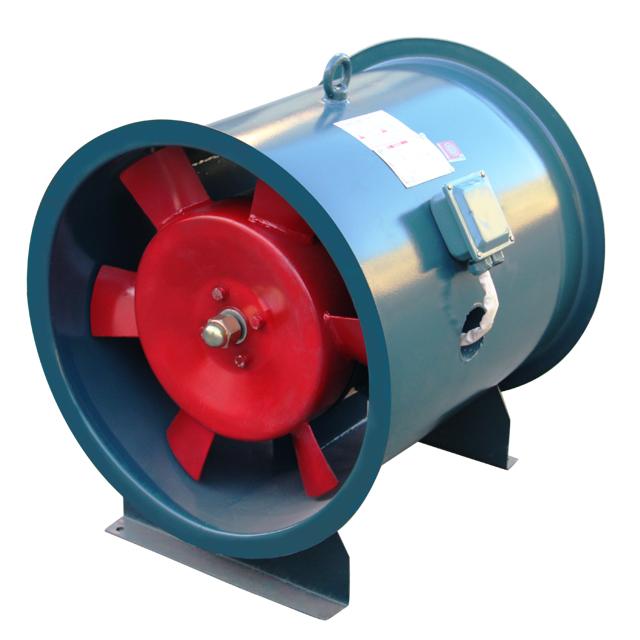Comprehensive guide for the installation and maintenance of the static pressure box
1.1 Determine the installation location
Before installing the pressure box, determining installation location and spatial planning is a crucial step. First, the size, weight and the noise and vibration during operation should be considered to ensure that the selected position can carry the static pressure box and meet its operation requirements. For example, for large static pressure boxes, the ground or platform with strong structure and strong bearing capacity should be selected as the installation position to ensure its stability and safety.
When determining the installation position, also consider the compatibility of the static pressure box and the surrounding environment. For example, the static case should be avoided in environments susceptible to moisture, corrosion or high temperatures to prevent damage or performance. At the same time, ensure that there is enough space around the static pressure box for future maintenance and maintenance work. According to experience, it is generally recommended to keep at least 1 meter of space around the static pressure box.
In terms of space planning, in addition to the size and weight of the static pressure box itself, the layout of the connected pipes, cables and other accessories should also be considered. Reasonable space planning can ensure the smooth and beautiful connection between the static pressure box and the accessories, and reduce the safety risks caused by improper layout.
1.2 Assessment the installation environment
Assess the installation environment and safety requirements before installation.
First, it is necessary to investigate the installation position in detail to ensure that the space layout is reasonable to meet the size and installation requirements of the static pressure box.
Second, the safety requirements cannot be ignored. Relevant safety regulations need to be strictly observed to ensure the safety of personnel and equipment during installation. When assessing safety requirements, consider not only the safety performance of the static box itself, but also the possible risks during the installation. For example, when hoisting the static pressure box, it is necessary to use the hoisting equipment conforming to the safety standards, and to operate strictly in accordance with the operating procedures to prevent accidents.
In addition, a careful analysis of the installation environment is required to ensure that the static pressure box can operate normally and achieve the desired results. Special vibration and noise reduction measures are adopted, and the vibration damping pad and sound insulation materials are installed, which effectively reduces the impact of noise and vibration on the operation of the static pressure box.
1.3 Prepare the installation tools and materials
Prepare the installation tools and materials before installing the is box. First, it is necessary to ensure that all necessary installation tools are ready, including but not limited to electric screwdrivers, wrenches, measuring tools (such as tape measure, horizontal ruler), lifting equipment, etc. The selection of these tools shall be based on the specific model and installation requirements of the static box to ensure smooth progress of the installation process. At the same time, for the installation of large static pressure boxes, professional lifting equipment, such as crane or elevator, may be used to ensure the safe lifting and positioning of the main parts.
In terms of material preparation, in addition to the static pressure box itself and its accessories, the corresponding pipes, sealing materials, fasteners and so on should also be prepared. The pipeline shall be selected based on the fluid characteristics and pressure requirements of the system, ensuring that the parameters such as pipe material, diameter and wall thickness meet the design requirements. The choice of sealing material is equally important, which directly affects the sealing performance and operating efficiency of the system. Therefore, reliable quality and corrosion-resistant sealing materials, such as rubber gaskets or silicone sealing strips, should be selected. The selection of the fasteners shall also comply with the relevant standards to ensure the stability and safety during the installation process.
2.1 Installation and fixing of the base
2.1.1 Positioning and calibration of the base
During the installation of the static pressure box, the base positioning and calibration are a crucial part. First, the space size of the installation position is accurately measured to ensure that the base can be firmly placed and meet the overall layout requirements of the static pressure box. According to the engineering drawings and the actual site situation, use the high-precision measuring tools such as laser rangefinder to ensure the accuracy of the base position.
The base calibration work can not be ignored. After the base installation, level detection to ensure that the base is in the horizontal state. This is because the static pressure box requires high installation accuracy, and the uneven level of the base will lead to the vibration and noise in the operation process of the static pressure box, and even affect the performance of the whole system.
In the process of base positioning and calibration, some successful cases and experiences can be learned. For example, in a large industrial project, engineers used three-dimensional laser scanning technology to make accurate measurements on the installation site, combined with BIM models, so as to achieve high-precision positioning and calibration of the base. The application of this technology not only improves the installation efficiency, but also ensures the stable operation of the static pressure box.
2.1.2 Base fixation and inspection
During the installation of the static pressure box, the base fixation and inspection are a crucial link. First of all, the base positioning and calibration must be accurate, which is related to the stability and safety of the whole static pressure box. Advanced laser positioning technology can be used to ensure that the base position error is within ± 1mm, so as to ensure the accuracy of the static pressure box installation.
When the base is fixed, use high-strength bolts and special fixings to ensure the firm connection between the base and the ground or the supporting structure. At the same time, strict quality inspection to ensure that they meet the national standards and engineering requirements. After fixing, a secondary inspection is required to test the bolt with a torque wrench to ensure that the fastening torque of each bolt is within the specified limit.
2.2 Main body assembly and installation
2.2.1 Assembly of the main parts
During the installation process of the static pressure box, the assembly of the main parts is a crucial link. First, it is necessary to ensure the integrity and quality of all main parts, including key components such as boxes, air inlet, air outlet, and separator. Before assembly, carefully check the model, specifications and quantity of each of the parts to ensure consistency with the installation drawings and instructions.
During the assembly process, the strict process flow and operating procedures shall be followed. For example, when assembling the box, ensure that the connection between the panels is tight and seamless, and use a special sealant to prevent air leakage. At the same time, the installation position and direction of the air inlet and outlet should be accurate to ensure the smooth and uniform distribution of air flow.
Special attention should be paid to the number and position of partitions. The function of the partition is to divide the internal space of the static box into multiple regions to achieve pressure balance between different regions. Therefore, the number and position of the partitions should be reasonably set according to the actual needs. Generally speaking, the more the number of partition panels, the more uniform the pressure distribution inside the static pressure box, but it will also increase the difficulty of installation and cost. Therefore, when assembling the partition plate, various factors need to be considered comprehensively to find the optimal balance point.
2.2.2 Hoisting and positioning of the main body
In the installation process of the static pressure box, the lifting and positioning of the main body is a crucial part. First, it is necessary to ensure the stability and safety of the hoisting equipment, usually using professional lifting machinery, such as cranes or cranes, and operating with experienced operators. Before hoisting, the hoisting equipment shall be comprehensively inspected to ensure that it meets the safety standards and has adequate load-bearing capacity.
During the lifting process, the installation drawings and operating procedures shall be strictly followed. First, the lifting point and lifting path should be determined to ensure that the main body of the static pressure box will not collide with the surrounding equipment or structure during the lifting process. Then, use the lifting belt or the sling to lift the static pressure box body smoothly and slowly move to the predetermined position. In the process of movement, close attention should be paid to the operation state of the hoisting equipment and the stability of the main body of the static pressure box to ensure the safety and error.
When the main body of the static pressure box is hoisted to the predetermined position, a precise positioning is required. This usually requires the adjustment of the static box body horizontally and vertically using positioning tools such as a laser stadiometer or horizontal ruler. During the adjustment process, ensure that the connection between the main body of the static pressure box and the base is close, stable, and meets the design requirements. At the same time, it is also necessary to detect the horizontal degree and verticality of the main body of the static pressure box to ensure that it meets the installation standards.
2.3 Connect the pipes and the accessories
2.3.1 Pipeline selection and connection
During the installation of a static tank. First, the selection of pipes should be determined according to the working pressure, flow rate and medium characteristics of the static pressure box. For example, for high pressure and large flow systems, seamless steel pipe with large wall thickness and strong pressure resistance should be selected; while for corrosive media, stainless steel or plastic pipe should be selected. In addition, the parameters such as the diameter, length and bending radius of the pipeline should also be calculated precisely according to the system requirements to ensure the smooth flow of the fluid in the pipeline.
In terms of pipe connection, the common connection methods include welding, flange connection, thread connection and so on. For large and high pressure systems, welding connections are favored because of their high strength and good sealing. However, the welding connection also has the problems of complicated operation and high technical requirements for the workers. Therefore, in the practical application, it is necessary to select the appropriate connection mode according to the specific situation. At the same time, in the process of connection, but also need to pay attention to the sealing of the pipeline, to ensure that no leakage phenomenon.
2.3.2 Installation and commissioning of accessories
During the installation of the static pressure box, the installation and debugging of the accessories is a crucial part. First, choosing the appropriate pipeline is the basis to ensure the efficient operation of the system. According to the design parameters and flow requirements of the static pressure box, the galvanized steel pipe with appropriate diameter is selected, which is not only corrosion resistant, but also can withstand high pressure. When connecting the pipeline, the combination of welding and flange connection is adopted, which not only ensures the firmness of the connection, but also facilitates the future maintenance and replacement.
The installation of the accessories also requires fine operation. For example, at the inlet and outlet of the static pressure box, precise regulating valves and flow meters are installed to achieve precise control of flow. The mounting positions, angles, and fastening of these accessories have been rigorously calculated and tested to ensure they perform for the best performance. In the debugging process, using the combination of pressure test and flow test, the comprehensive inspection and adjustment of the parameters of the system.
3.1 System debugging and balance
3.1.1 Commissioning process and steps
In the debugging process of the static pressure box, it is crucial to ensure the balance and stable operation of the system. The first step of debugging is to clarify the debugging process and steps, which usually includes a comprehensive inspection before the system starts, gradually starting the system, observing and recording the changes of various parameters. For example, after starting the system, you need to pay close attention to the pressure changes inside the static pressure box to ensure that it fluctuates within a preset range. At the same time, advanced sensors and data analysis tools can be used to monitor the operation status of the system in real time and find potential problems in time.
In the debugging process, the adjustment of the system balance is particularly critical. This involves a fine regulation of the airflow distribution inside the static box to ensure that it meets the design requirements. By adjusting the size and position of the air inlet and outlet, and optimizing the pipeline layout, it can effectively improve the airflow distribution and improve the operation efficiency of the system.
After the commissioning is completed, the performance testing and evaluation are also required. This includes testing the key indicators such as flow, pressure, and noise of the static pressure box to verify whether it meets the design requirements. At the same time, the stability and reliability of the system can be further analyzed by comparing the performance data under different test conditions.
3.1.2 System balance and adjustment
In the system debugging and testing stage, the system balance and adjustment are the key links to ensure the efficient and stable operation of the static pressure box. Then, the advanced hydrodynamic analysis model is used to accurately calculate the internal pressure distribution and flow distribution of the static pressure box by simulating the fluid flow under different working conditions.
The adjustment of system balance not only depends on advanced analytical models, but also requires rich practical experience and meticulous operation. In practice, strictly follow the commissioning process, first check the installation of all parts of the static pressure box to ensure no loosening or leakage. Then, gradually open the system, observe the running state of each component, and record the key data, such as pressure, flow, temperature, etc. By comparing these data, we can accurately determine whether the system is in balance and what adjustments need to be made.
3.2 Performance test and evaluation
In the performance test stage of the static box, scientifically rigorous methods and standards can be adopted to ensure that the performance of the static box meets the expected requirements. First, according to the industry standards, the static pressure stability is tested. The response time and stability of the static pressure box under different pressures were recorded by simulating the pressure changes under different working conditions.
4.1 Daily maintenance and inspection
4.1.1, cleaning and dust removal
In the maintenance and maintenance of the static pressure box, cleaning and dust removal is a crucial part. Because the static pressure box operates in a complex environment for a long time, it is easy to accumulate dust and dirt inside, which will not only affect the normal operation of the equipment, but also may have a negative impact on the system performance. Therefore, the regular cleaning and dust removal of the static pressure box is the key measure to ensure the efficient and stable operation of the equipment.
In the cleaning and dust removal process, professional cleaning tools and materials, such as high pressure air guns, vacuum cleaners and special cleaners can be used. These tools and materials are effective in removing dust and dirt inside the pressure box while avoiding damage to the equipment.
In order to ensure the effect of cleaning and dust removal, detailed cleaning plans and procedures also need to be made.Before cleaning, first close the static pressure box and disconnect the power supply to ensure safety. Then, use a high pressure air gun and vacuum cleaner to remove the accumulated dust and dirt. During cleaning, special attention should be paid to protect the sensitive parts inside the static pressure box to avoid damage. Finally, a special cleaner is used to wipe and disinfect the pressure box to ensure cleanliness and hygiene of its internal environment.
Through regular cleaning and dust removal, it can effectively improve the operation efficiency and stability of the static pressure box, and prolong its service life. At the same time, it also helps to reduce the occurrence of equipment failures and reduce maintenance costs.
4.1.2 Inspection and adjustment of fasteners
In the maintenance and maintenance process of the static pressure box, the inspection and adjustment of the fasteners is a crucial part. As a bridge connecting each component, the stability of the fasteners directly affects the overall performance and safety of the static pressure box. Therefore, the regular inspection and adjustment of the fasteners is the key measure to ensure the stable operation of the static pressure box.
In the aspect of the fastener adjustment. Once the fastener is found to be loose or has insufficient tightening force, it should be tightened and adjusted immediately. For damaged fasteners, new parts should be replaced and strictly tested and evaluated to ensure that they meet the requirements for use. Regular preventive maintenance of fasteners to extend their service life and the improvement of overall performance of static tank through lubrication and fastening.
4.2 Regular maintenance and maintenance
4.2.1 Lubrication and replacement of vulnerable parts
In the regular maintenance and maintenance of the static pressure box, the lubrication and replacement of vulnerable parts are the key link to ensure the long-term and stable operation of the equipment. Damable parts, such as bearings and seals, will fail due to wear and aging during the long operation, thus affecting the performance and safety of the static pressure box. Therefore, regular inspection and replacement of vulnerable parts is necessary to maintain the performance of the static pressure box.
In terms of lubrication, choosing the appropriate lubricant is essential to reduce friction, reduce wear and extend the life of the equipment. According to the working environment and operating conditions of the static pressure box, lubricants with excellent high temperature resistance, oxidation resistance and corrosion resistance should be selected. At the same time, the amount of lubricant addition and the replacement cycle should also be accurately controlled according to the actual situation of the equipment.
In terms of the replacement of vulnerable parts, detailed replacement plans and records should be established to ensure timely replacement before the vulnerable parts fail. At the same time, the replaced vulnerable parts should be carried out in a detailed analysis and evaluation to find out the cause of failure, so as to take targeted measures in the subsequent maintenance. In addition, an inventory management system should be established to ensure timely access to the required vulnerable parts when needed.
4.2.2 Evaluation and adjustment of the system performance
To evaluate the overall performance of the system by monitoring the operating parameters, such as pressure, flow, temperature, and analyzing the collected data with data analysis software.
On the basis of the evaluation results, the static pressure box is adjusted accordingly according to the actual needs. For example, for the problem of insufficient flow under certain working conditions, the flow control valve is used for fine control, and the effect of the adjustment is verified through experiments. In addition, the advanced energy efficiency analysis model can be introduced, the energy consumption of the static pressure box is comprehensively evaluated, and targeted energy saving measures are proposed, such as optimizing operating parameters and adopting energy-saving equipment.
In the process of performance evaluation and adjustment, we should pay attention to the accuracy and reliability of the data. Various sensors and measuring equipment are used to monitor and record the parameters of the static pressure box in real time to ensure the objectivity and accuracy of the evaluation results. At the same time, a perfect data management system can also be established to store and analyze the evaluation data, so as to provide strong support for the subsequent maintenance and maintenance.









